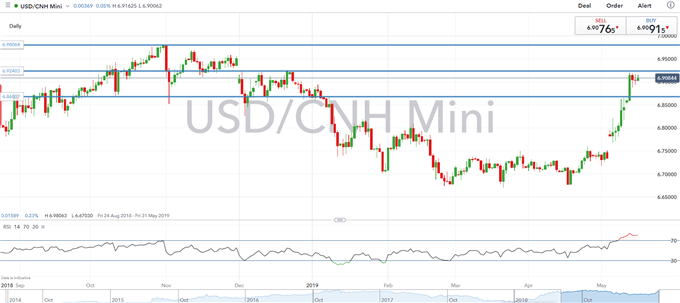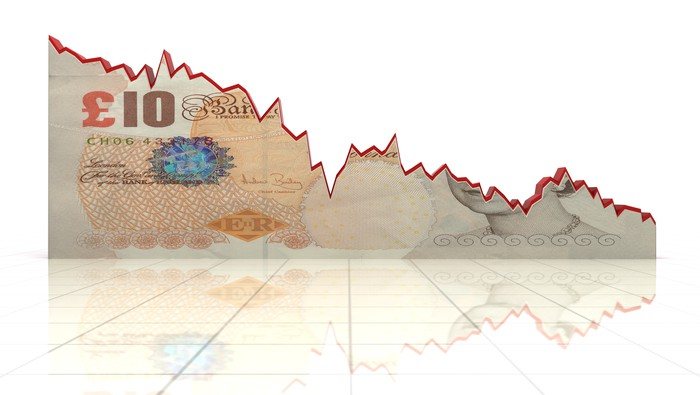Talking Points
- Huawei placed on US “Entity List”, company seen as a threat to national security.
- Greater implications - Huawei relies on US components to supply its customers worldwide.
- USDCNH nears decade-high as it eyes psychological 7.00 handle.
As trade war tensions escalate between the US and China, Donald Trump has restricted Chinese communication company Huawei’s access to the US telecommunications market by putting it on a blacklist, forbidding it from doing business with American companies.
However, restricting relationships with Huawei, China’s largest provider of telecoms equipment, may have a knock-on effect on European and Asian markets as Huawei relies on US components to supply multiple telecommunication carriers around the world.
Chinese equity indices were little changed after the announcement as they have been focused on fresh trade war developments for the last few days, but Huawei’s affiliate companies and suppliers’ equity prices have taken a hit.
Huawei Ban: US-China Relations Deteriorate
After an executive order was issued on Wednesday May 15, American companies will be required to obtain licences to sell critical technology to the Chinese telecoms company. The US Commerce Department said it was adding Huawei and 70 of its affiliates to its “Entity list”, which compiles individuals, companies and organisations that are seen as posing a risk to US national security.
Speaking after a hearing on 5G development, US Senator Marsha Blackburn said that “They (Huawei) imbed spyware and malware into their hardware, and we know that they might be enticing entities to buy their equipment by under-pricing it, but the long-term costs are going to be very expensive because of the way the Chinese will then pull information and spy on you”.
But Huawei believes that the US measures will not necessarily make the US stronger or safer, it will just limit its options leading it to seek more expensive alternatives to build its 5G network, which will in turn make it less competitive harming the interests of US companies and consumers.
While many countries agree that Huawei, and China, pose a spying threat to the Western telecommunications infrastructure, they are unwilling to take a firm stance against China due to the economic impact it would entail.
The Impact of Tariffs and Trade Wars on the US Economy and the Dollar
Uncertainty With the UK – Partial Huawei Ban
Last month, UK PM Theresa May fired her defence secretary Gavin Williamson after it was alleged that he was the source of a news report that the UK was ready to allow Huawei to have access to part of the country’s 5G network.
The company is said to have spent GBP1.3 billion on investment in the UK over the last five years, but the recent developments with the US put pressure on PM May to make a move to ensure that UK consumers are not at risk of being spied on by allowing Huawei to participate in the country’s 5G network.
In an attempt to show that the company is firm on not wanting to spy on western consumers, Huawei is believed to be prepared to sign a no-spy agreement with the UK government to ensure that their components are allowed to be used to build the UK’s 5G network, after it emerged that the UK’s national security council had taken a decision to allow Huawei to supply only “non-core” equipment.
US-China Trade War Tensions Keep USDCNH Risks to The Upside
Since President Trump announced that additional tariffs will be placed on Chinese goods, the Chinese Yuan has continued to weaken against the greenback with USDCNH breaking above 6.90. While the pair still has some room to go to hit the psychological 7.00 handle, the continued escalation keeps risks tilted to the upside.
USDCNH Price Chart: Daily Time Frame (Aug 2018 – May 16, 2019)

Recommended Reading
CNH vs CNY: Differences Between the Two Yuan – Renee Mu, Currency Analyst
KEY TRADING RESOURCES:
- Just getting started? See our beginners’ guide for FX traders
- Having trouble with your strategy? Here’s the #1 mistake that traders make
- See our Q2 forecasts to learn what will drive FX markets through the quarter.
--- Written by Daniela Sabin Hathorn, Junior Analyst







